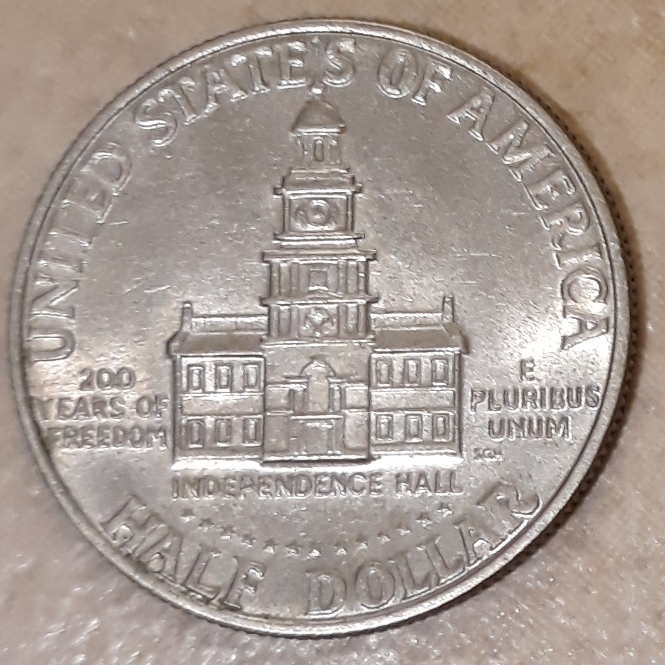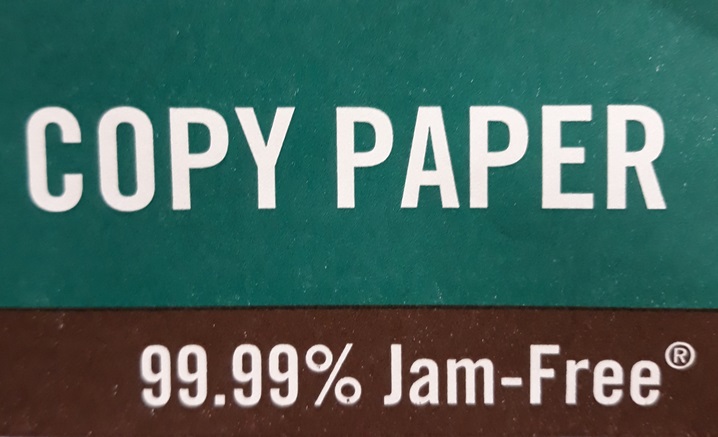29 Probability
 Probability is the likelihood that some event occurs. If the event occurs, we call that a favorable outcome. The set of all possible events (or outcomes) is called the sample space of the event.
Probability is the likelihood that some event occurs. If the event occurs, we call that a favorable outcome. The set of all possible events (or outcomes) is called the sample space of the event.
We will limit our focus to independent events, which do not influence each other. For example, if we roll a 5 on one die, that does not affect the probability of rolling a 5 on the other die. (We will not be studying dependent events, which do influence each other.)
Theoretical Probability
If we are working with something simple like dice, cards, or coin flips where we know all of the possible outcomes, we can calculate the theoretical probability of an event occurring. To do this, we divide the number of ways the event can occur by the total number of possible outcomes. We may choose to write the probability as a fraction, a decimal, or a percent depending on what form seems most useful.
Theoretical probability of an event:
![]()
Suppose two six-sided dice, numbered ![]() through
through ![]() , are rolled. There are
, are rolled. There are ![]() possible outcomes in the sample space. If we are playing a game where we take the sum of the dice, the only possible outcomes are
possible outcomes in the sample space. If we are playing a game where we take the sum of the dice, the only possible outcomes are ![]() through
through ![]() . However, as the following table shows, these outcomes are not all equally likely. For example, there are two different ways to roll a
. However, as the following table shows, these outcomes are not all equally likely. For example, there are two different ways to roll a ![]() , but only one way to roll a
, but only one way to roll a ![]() .
.
| 1 | 2 | 3 | 4 | 5 | 6 | |
|---|---|---|---|---|---|---|
| 1 | ||||||
| 2 | ||||||
| 3 | ||||||
| 4 | ||||||
| 5 | ||||||
| 6 |
Exercises
Two six-sided dice numbered ![]() through
through ![]() are rolled. Find the probability of each event occurring.
are rolled. Find the probability of each event occurring.
- The sum of the dice is
 .
. - The sum of the dice is
 .
. - The sum of the dice is
 or
or  .
. - The sum of the dice is greater than
 .
. - The sum of the dice is
 .
.
Some things to notice…
If an event is impossible, its probability is ![]() or
or ![]() .
.
If an event is certain to happen, its probability is ![]() or
or ![]() .
.
If it will be tedious to count up all of the favorable outcomes, it may be easier to count up the unfavorable outcomes and subtract from the total.
Exercises
Two six-sided dice numbered ![]() through
through ![]() are rolled. Find the probability of each event occurring.
are rolled. Find the probability of each event occurring.
- The sum of the dice is
 .
. - The sum of the dice is not
 .
. - The sum of the dice is greater than
 .
. - The sum of the dice is
 or lower.
or lower.
The set of outcomes in which an event does not occur is called the complement of the event. The event “the sum is not 5” is the complement of “the sum is 5”. Two complements complete the sample space.
Exercises
A bowl of ![]() Tootsie Rolls Fruit Chews contains the following:
Tootsie Rolls Fruit Chews contains the following: ![]() cherry,
cherry, ![]() lemon,
lemon, ![]() lime,
lime, ![]() orange,
orange, ![]() vanilla.
vanilla.
- If one Tootsie Roll is randomly selected from the bowl, what is the probability that it is cherry?
- If one Tootsie Roll is randomly selected from the bowl, what is the probability that it is not cherry?
- What is the probability that a randomly selected Tootsie Roll is either orange or vanilla?
- What is the probability that a randomly selected Tootsie Roll is not orange or vanilla?
Here’s where we try to condense the basics of genetic crosses into one paragraph.
Each parent gives one allele to their child. The allele for brown eyes is B, and the allele for blue eyes is b. If two parents both have genotype Bb, the table below (which biologists call a Punnett square) shows that there are four equally-likely outcomes: BB, Bb, Bb, bb. The allele for brown eyes, B, is dominant over the gene for blue eyes, b, which means that if a child has any B alleles, they will have brown eyes. The only genotype for which the child will have blue eyes is bb.
| B | b | |
|---|---|---|
| B | BB | Bb |
| b | Bb | bb |
Exercises
Two parents have genotypes Bb and Bb. (B = brown, b = blue)
- What is the probability that their child will have blue eyes?
- What is the probability that their child will have brown eyes?
Now suppose that one parent has genotype Bb but the other parent has genotype bb. The Punnett square will look like this.
| B | b | |
|---|---|---|
| b | Bb | bb |
| b | Bb | bb |
Exercises
Two parents have genotypes Bb and bb. (B = brown, b = blue)
- What is the probability that their child will have blue eyes?
- What is the probability that their child will have brown eyes?
Empirical Probability
The previous methods work when we know the total number of outcomes and we can assume that they are all equally likely. (The dice aren’t loaded, for example.) However, life is usually more complicated than a game of dice or a bowl of Tootsie Rolls. In many situations, we have to observe what has happened in the past and use that data to predict what might happen in the future. If someone predicts that an Alaska Airlines flight has an ![]() of arriving on time[1], that is of course based on Alaska’s past rate of success and this number will vary from month to month. When we calculate the probability this way, by observation, we call it an empirical probability.
of arriving on time[1], that is of course based on Alaska’s past rate of success and this number will vary from month to month. When we calculate the probability this way, by observation, we call it an empirical probability.
Empirical probability of an event:
![]()
Although the wording may seem complicated, we are still just thinking about ![]() .
.
Exercises
A photocopier makes ![]() copies, but
copies, but ![]() of them are unacceptable because they have toner smeared on them.
of them are unacceptable because they have toner smeared on them.
- What is the empirical probability that a copy will be unacceptable?
- What is the empirical probability that a copy will be acceptable?
- Out of the next
 copies, how many should we expect to be acceptable?
copies, how many should we expect to be acceptable?
An auditor examined ![]() tax returns and found errors on
tax returns and found errors on ![]() of them.
of them.
- What percent of the tax returns contained errors?
- How many of the next
 tax returns should we expect to contain errors?
tax returns should we expect to contain errors? - What is the probability that a given tax return, chosen at random, will contain errors?

Probability of More Than One Event
It was mentioned earlier in this module that independent events have no influence on each other. Some examples:
- Rolling two dice are independent events because the result of the first die does not affect the probability of what will happen with the second die.
- If we flip a coin ten times, each flip is independent of the previous flip because the coin doesn’t remember how it landed before. The probability of heads or tails remains
 for each flip.
for each flip. - Drawing marbles out of a bag are independent events only if we put the first marble back in the bag before drawing a second marble. If we draw two marbles at once, or we draw a second marble without replacing the first marble, these are dependent events, which we are not studying in this course.
- Drawing two cards from a deck of
 cards are independent events only if we put the first card back in the deck before drawing a second card. If we draw a second card without replacing the first card, these are dependent events; the probabilities change because there are only
cards are independent events only if we put the first card back in the deck before drawing a second card. If we draw a second card without replacing the first card, these are dependent events; the probabilities change because there are only  cards available on the second draw.
cards available on the second draw.
If two events are independent, then the probability of both events happening can be found by multiplying the probability of each event happening separately.
Note: This can be extended to three or more events. Just multiply all of the probabilities together.
Exercises
An auditor examined ![]() tax returns and found errors on
tax returns and found errors on ![]() of them.
of them.
- What is the probability that the next two tax returns both contain errors?
- What is the probability that the next three tax returns all contain errors?
- What is the probability that the next tax return contains errors but the one after it does not?
- What is the probability that the next tax return does not contain errors but the one after it does?
- What is the probability that neither of the next two tax returns contain errors?
- What is the probability that none of the next three tax returns contain errors?
- What is the probability that at least one of the next three tax returns contain errors? (This one is tricky!)
- Source (PDF file, see page 6): https://www.transportation.gov/sites/dot.gov/files/2024-01/December%202023%20ATCR.pdf ↵

